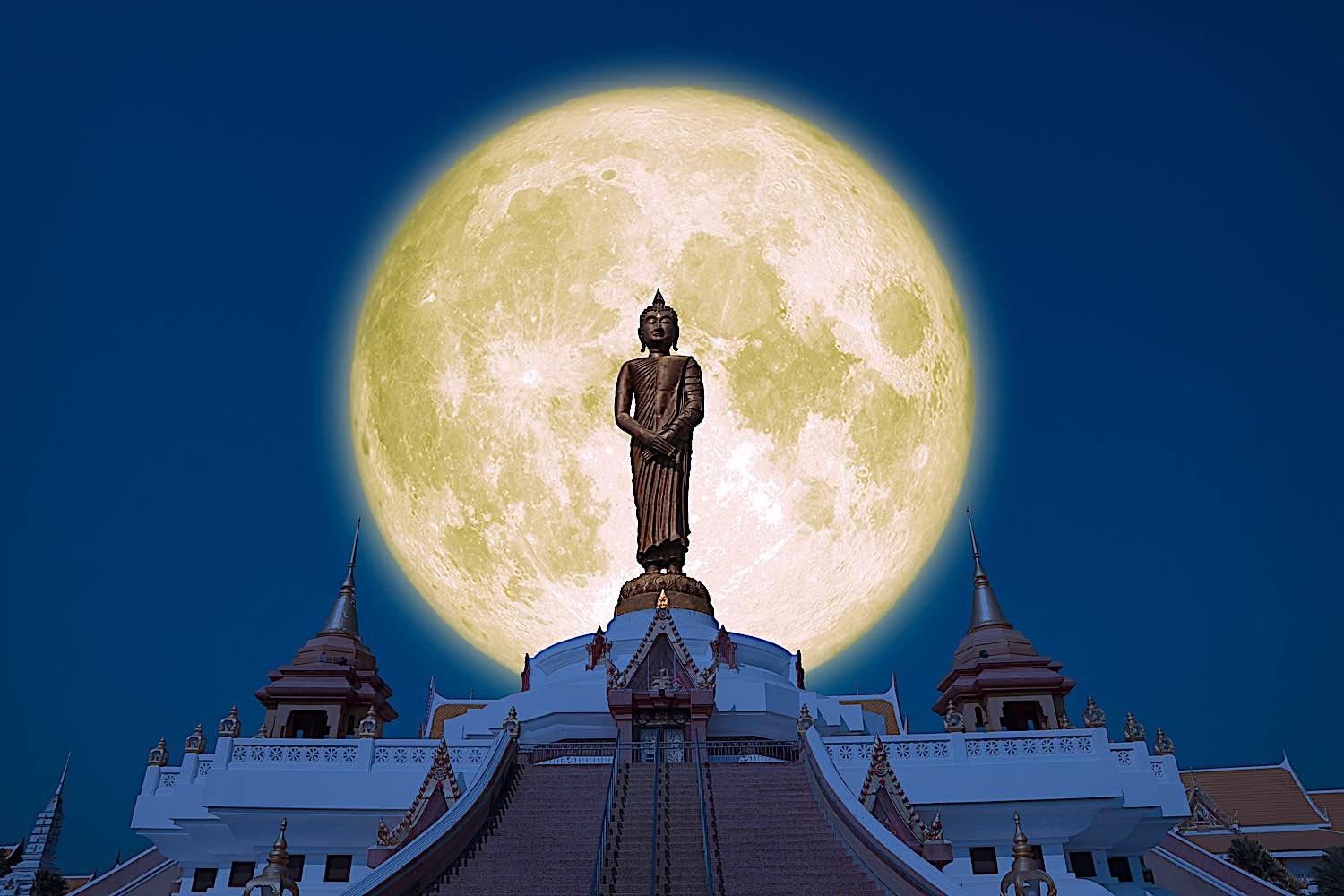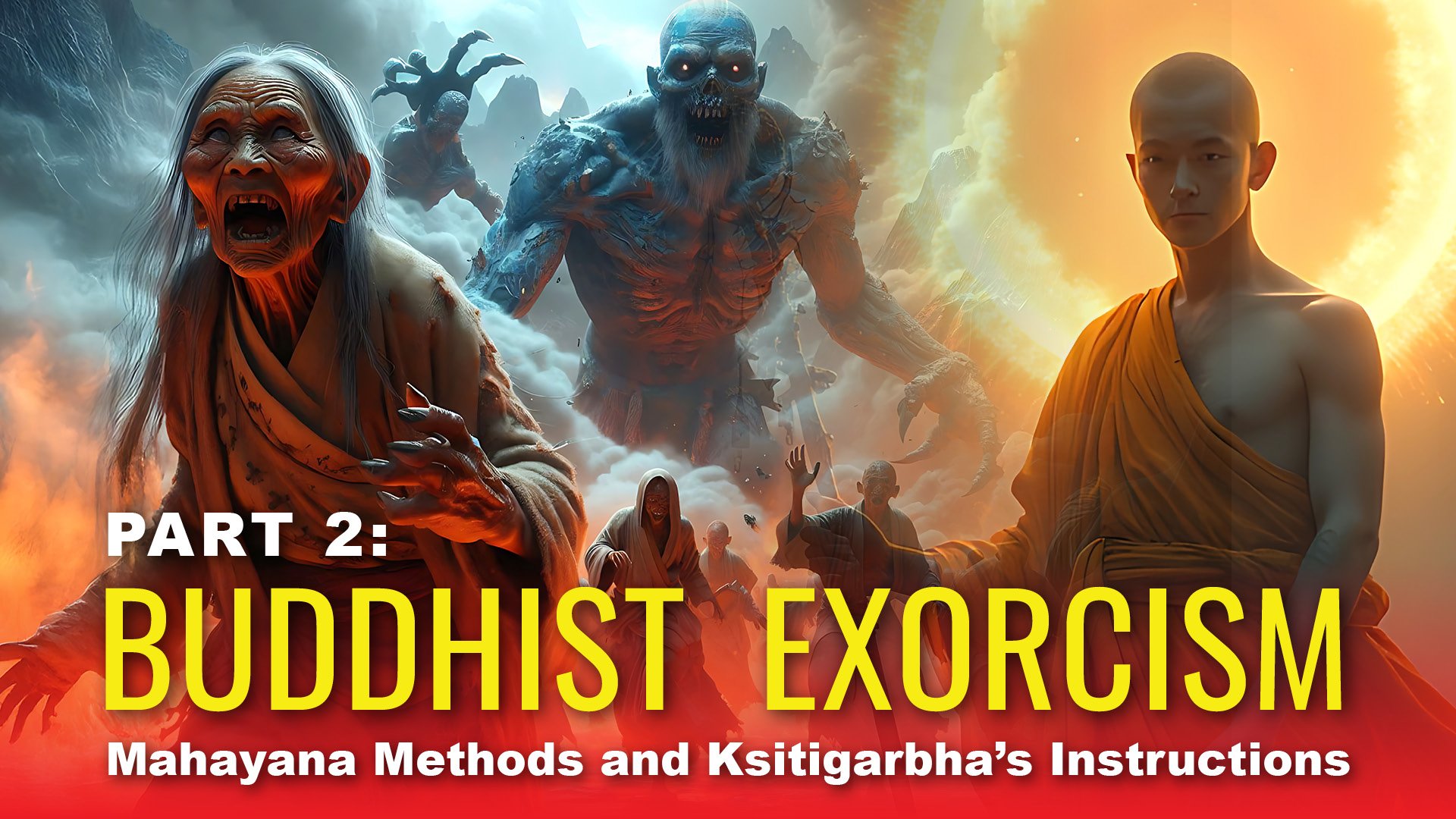The Generosity of Offering the Body
The guiding teacher of Heart Sangha on the connections between generosity, motherhood, and chöd The post The Generosity of Offering the Body appeared first on Tricycle: The Buddhist Review.

I first heard my teacher Anam Thubten speak about the practice of chöd (Tib.: gcod) when I was pregnant with my first son. My teacher said chöd meant cutting through, severance. He introduced Machig Lapdrön, the founder of the chöd dharma. She was a 12th-century Tibetan mahasiddha, a highly realized person. In the West, we might call such a person a saint.
I was sitting on a burgundy cushion in my teacher’s temple. It has soaring buttresses and is paneled in redwood. I’ve always felt so safe in that temple, like I am meditating in the rib cage of a whale and nothing can touch me. My teacher explained that there would be a group of people hiking into the Canyon de Chelly, on Navajo sacred land, to do a chöd retreat. They’d hike in the heat and camp in the canyon. I remember that day in the temple vividly because I had this toes-to-head whoosh of feeling. That’s mine, I felt. I looked down at my pregnant belly, and realized that I wouldn’t be going to the canyon. I settled back on the cushion.
The chöd retreats went out year after year, and, simultaneously, new events in my life were unfolding: I was pregnant, I had a newborn, I was nursing a baby. I couldn’t answer my inner yearning to try chöd until 2020. With the pandemic, the chöd retreats went online. I was able to learn the chants and how to work the damaru, a double-sided drum. I moved to Philadelphia, far from my teacher and the safe interstices of the whale rib cage temple. I had a second son. Chöd became my main practice. My teacher made me a teacher.
I never made it to an in-person chöd retreat. Some part of me resented the householder life, the mama body, that kept me tethered to the lives of my babies. I cultivated patience to soften the feeling of being chained in a monotony of bathtime, brush teeth, bedtime. I longed for the glamour of a red rock retreat, of chanting in unison. My teacher stopped leading groups into the Canyon de Chelly, where Navajo guides had kept watch against coyotes. The circumstances had changed.
*
C höd is a unique Buddhist practice in that the teachings first originated in Tibet and then went back to India, where they were recognized. This was a turning point for Tibetan Buddhism. It graduated from being a country with established Buddhism to mature Buddhism. Chöd originated from a woman, Machig Lapdrön, who was a mother and a layperson. Often described as one of the crown jewels of Vajrayana Buddhism, chöd has been revered across all four Tibetan lineages for centuries. Traditionally transmitted only after a practitioner has completed ngondro, the preliminary practices of the Vajrayana, I’ve begun teaching Chöd Healing, an accessible form of chöd, on the instruction of my teacher, to meet these times of collective instability and fragmentation. The idea is to offer more people access to a powerful, direct method of waking up. There’s urgency right now to transform into beings of wisdom and light.
The big practice of chöd is offering our body to our neurotic impulses and to the suffering of the world. It is a radical change from our usual orientation to the world.
There’s urgency right now to transform into beings of wisdom and light.
Offering the body is a form of generosity. Generosity is a foundational idea that runs through all three vehicles of Buddhism. Generosity is dana in Sanskrit. It is the opening practice of the six paramitas, the six transcendent actions of a bodhisattva, because generosity opens the heart. You can’t begin the inward journey of “disarming the heart,” as Anam Thubten calls it, without practicing generosity. If you’re being generous, your heart is open, and everything flows out of that.
The six paramitas are a Mahayana practice, but countries that are Theravada in origin, like Thailand, where I was born and raised, have beautiful practices of generosity, including ten paramitas. Thailand as a culture is one of the most generous places anyone could go. There is so much heart in my home country. One way you might notice this is by how many words have “heart” in them. Like น้ำใจ (nam jai), water of the heart. This is how you say kindness. ดีใจ (dee jai), my heart is happy, means I’m happy for you.
Thai is a direct language. ตกใจ (tok jai), to be startled, is, literally, my heart fell. The metaphor is better than the meaning. ปลอบใจ (plop-jai) is to console. It literally means to tend to the heart—and not your own. Prob jai can be done only by a person on someone else’s heart.
The heart is used all the time because it’s our heart that’s on the line. For all of us humans, our heart is on the line. We are tender beings. But we forget this, and we think that we’re intellects walking around in bodies that are good for moving us from one place to the other and impressing our friends on social media.
The heart holds our essence. The paramitas, often translated as “perfections,” begin with the practice of generosity. Generosity is the foundation of ethical conduct.
One of the things that we’re living through in this time is the collapse of a standard of human decency. You wouldn’t think that with all of our shiny conveniences, that dharma teachers would still have to teach about how to be a decent human being. But, actually, we have to teach about ethical conduct even more. It seems that the more civilized our lives look on the outside, the more we regress inside. This is a sad state of affairs. Into this picture steps Machig Labdrön’s generosity of offering the body.
*
Offering the body is a practice built on the Mahayana wisdom of emptiness, which is the idea that this shimmering world is less concrete, less solid than we think it is. It’s a tricky idea to communicate because it’s not something we can understand conceptually. It’s something we understand from our bodies. We could spend a long time talking about emptiness, but talking about emptiness is like talking about an orgasm. You don’t know it until you’ve experienced it. And then you know it, and the description doesn’t do it justice. I realize it’s unusual to talk about orgasms in a dharma talk, but householder teachers use householder analogies.
When we offer our bodies, what we’re doing is cutting through the most crucial way that we solidify the world, which is to see the world as if we are the most important thing in it. We think the world revolves around “I.” In that orientation, a lot of suffering comes into being: This is my house and my car. This is my beauty, this is my body, these are my children.
When we shift our egoic identification from ourselves, even if we can give it only two millimeters of space a couple times a month, there’s a tremendous spaciousness that comes in. There’s a lot of wisdom waiting to rush in, that has been right there. We need to loosen our grip a little bit on “I.”
When we shift our egoic identification from ourselves, even if we can give it only two millimeters of space a couple times a month, there’s a tremendous spaciousness that comes in.
The idea of loosening the grip on “I” makes our ego quite worried. I’m talking about our egos with a lot of bows and love, because it’s our egoic selves that have protected us for so long, that have perhaps been responsible for our survival up to this point. But the ego’s idea of where we can live is small, limited. My younger son likes to play with a mouse house. To borrow the metaphor from his toy, it’s like we’re living in the closet of a mouse house, only to find that we can be human-size, in a forest.
What a change! Ego can’t imagine how vast and intelligent, how much penetrating wisdom and love there is that transcends self, how much love there is that loves all—it can’t imagine any of this is possible because the ego is bound. It is trapped in a system.
The truth is that we have the capability to live so much bigger than we can imagine from our egoic perception. In Tibetan Buddhism, the vastness we touch is called our buddha-nature, and it’s not something we earn because we’re good. It’s something in each of us because we’re alive.
The generosity of offering the body is Machig’s brilliant way of—instead of spending a long time trying to understand these arguments conceptually—giving us a practice that cuts through all the claptrap, all the veils of our ignorance. Boom! We do it now.
I’m talking about a practice that has got a big warning label: Do not try this at home on your own. You should only be doing this accompanied by a teacher in a respected lineage. But I want to introduce the idea. It’s a seismic mental shift. If you can practice the generosity of offering the body with sincerity, what you unlock is the buddha-nature inside yourself. What you unlock is a digested, integrated understanding that this body we spend so much time cherishing is a tiny, beautiful blip in the scheme of the cosmos. We are here for a short time. We are one among many. With Machig’s dharma we try to make a paradigmatic jump, like the jump from thinking the sun revolves around the Earth to the truth that we revolve around the sun. It’s like that.
At first this shift seems impossible. You might feel a lot of resistance, a lot of fear. And then one day you try it on. The sun is keeping all of us alive. We are not the center of our own universe. It’s the other way around. Wisdom and compassion are the forces running through all of us. We are here to liberate and serve others.
Realizing that sets you free to be bigger than your human body, your one short life. In Machig Labdrön’s offering the body, you imagine in meditation that your body is a feast for the hungry, is medicine for the sick, is shelter for the unhoused, and is peace for those living in violence. Your body is transformed into everything that is needed, in every time, for every person. Your body becomes supreme generosity, or what I’ll call maha dana.
What you’re doing is saying: Let me dip my toe into egoic crumbling. Let me experiment with the bounds of this ceremony. It’s probably about an hour. And after that I will walk out and I will eat lunch as I normally do.
*
There are examples of offering the body that make it less exalted and exotic, which is a tricky word. We offer the body all the time, in everyday life. We don’t realize it, and sometimes we fight it.
Women who become mothers offer the body. There’s an internal surrender that happens to make room for a new life. Your body changes. Popular culture does not give us mothers an easy time with offering the body. It doesn’t give us credit for the compassionate surrender that is happening. We’re offering our bodies to bring children into the world. We should get credit for that. It is a highly skilled practice that helps us realize wisdom.
When someone is sick, aging, there’s a way internally that those moments can be offering the body. There’s also a way internally that aging can not be offering the body, which is when you’re denying it, and spending a lot of energy denying it. But that little softening inside that accepts that sickness and aging and death are the natural progression of human life—that these wrinkles are beautiful, and the slowing down of what used to be a fast mental capacity is beautiful? That is offering the body too.
What if, in this human life, we are built to offer the body? We are built to do it and realize wisdom. Machig gave us a direct practice to do it. To cut through and be in this wisdom place.
There is a relief that comes when the “I” of self-cherishing is loosened. I worked with patience as a mother for a long time. I still do. But somewhere in the years of bathtime/brush teeth/bedtime, I began to wonder whether Machig’s experience as a mother of four was part of what led her to create chöd. Did she realize that mothers offer their bodies, and design the body offering from that place? Because if so, maybe I wasn’t missing out when I was pregnant, and in labor, and my breasts were swollen as the milk came in. Maybe I was in Mother Retreat. Right where I was meant to be.

 Aliver
Aliver 





























